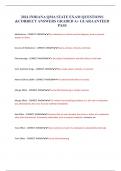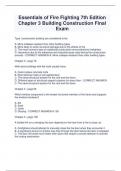Samenvatting
Summary Developmental Psychopathology Chapter 13 - Health-Related and Substance-Use Disorders
- Instelling
- Universiteit Utrecht (UU)
Een overzichtelijke en complete samenvatting van het dertiende hoofdstuk uit het boek Abnormal Child Psychology (7e editie). Belangrijke termen zijn blauw gekleurd en na elk gedeelte is er een Section Summary om alles op een rijtje te zetten. Aan het eind is er een Quiz van MindTap inclusief (!) ...
[Meer zien]














